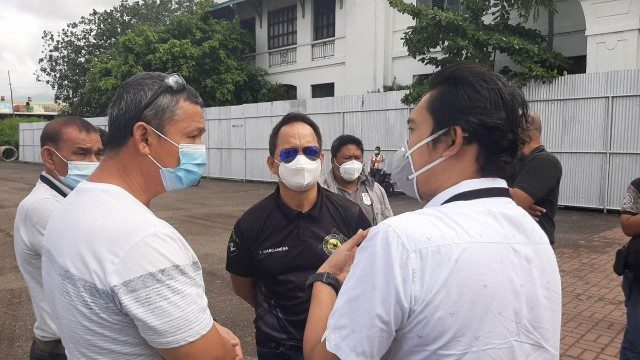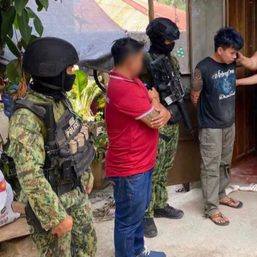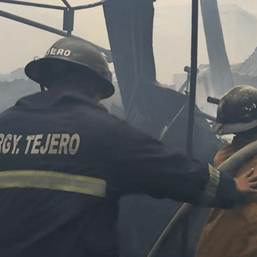SUMMARY
This is AI generated summarization, which may have errors. For context, always refer to the full article.

A month ago, when SARS-CoV-2 spread uncontrollably in Cebu Cty, President Rodrigo Duterte tapped environment secretary Roy Cimatu and retired general Mel Feliciano to oversee the city’s counterattack. (READ: DENR chief Roy Cimatu to oversee Cebu City’s COVID-19 response)
According to Cebu City Councilor Joel Garganera, who was Cebu City’s “czar” of the COVID-19 Emergency Operations Center, the two former military top brass helped the city improve its pandemic response by being “meticulous” in the details.
“General Feliciano is very meticulous into details like the biggest problem we have is how to trace those line lists, those positive line lists,” Garganera said in a Rappler Talk on Friday, August 7.
A line list refers to those who have tested positive and are recorded by health authorities in the area.
He said that one initial problem that contributed to the ballooning of Cebu City’s coronavirus case count was inaccurate reporting as to where the patients resided.
The national Inter-Agency Task Force on Emerging Infectious Diseases (IATF-EIC) wanted this list cleaned up.
“And then because once it reached the barangay, sometimes the address is just the barangay when you talk about Guadalupe and you just put there “Guadalupe” – Guadalupe has a 60,000 population, Maboolo has a 40,000 population so that is where – to me– that’s the root of the problem.”
In the beginning, Cebu City seemed prepared with its coronavirus planning and response. As early as March, the city’s cluster clinics had already been set up, tests kits were acquired, and the city was quick to lock down barangays with high numbers of cases.
But Garganera said the city “dropped the ball.” And while systems were in place, not being meticulous about the little details made the difference.
“We really dropped the ball and then aggravated by the fact when it downgraded to a lower quarantine status,” Garganera said.
It was during Cebu City’s first period of general community quarantine (GCQ) from June 1 to 15, where hospitals were filling up quickly. New cases were reported by the hundreds every day, and the number of deaths also started to increase.
“So people just went out, that’s when the president said gahi’g ulo (stubborn) because they can see all the pictures there as if nothing happened,” he added.
But Garganera said the LGUs moved to correct those mistakes, with the help of the IATF.
The city had previously admitted that another error was allowing home quarantine for those who tested positive when their living area was not conducive for isolation. The patient should have only been allowed to home quarantine if they had their own entrance, toilet, and are not exposed to other people.
Intensified contact tracing, improved data reporting
While Cebu City was downgraded to GCQ again on August 1, Garganera believes they are in a better place so that they would not backslide.
Contact tracing has improved, Garganera said. Data reporting is also being reconciled to get a better picture of the situation.
“Before, we used to have only like 5 contact tracing teams. But right now, we have around 114 contact tracing teams and then we have a separate swabbing team,” Garganera said.
The city also had to speed up extracting patients and making sure they did not wait too long for their swab results.
“And on top of that, we really get the support of the barangays because they’re on top in making a lockdown on houses that have positive individuals and then they also extract the patients, they isolate, they transport it to the isolation center,” the city councilor said.
For several weeks, the data between Cebu City Health Department and the Department of Health Central Visayas were conflicting.
“Feliciano wanted that [data] cleaned up as well,” the city councilor said.
Both departments were still working on the reconciliation, but since then, Cebu City stopped reporting the numbers of its own city in favor of DOH-7’s numbers.
Independent research showed that signs were indeed improving in what was once called the second “epicenter” of the coronavirus outbreak in the Philippines.
University of the Philippines researchers said the replication rate in Cebu City dropped from a high of 2 to 1.14 in the month the national government stepped in to oversee the response. This means a person with coronavirus was spreading it to an average of two other people previously. Now it’s down to almost one.
From daily cases by the hundreds for one straight month, Cebu City’s numbers have gone down to double digits, a trend that has continued even 8 days into the GCQ.
On Saturday, August 9, Cebu City reported 16 new cases. It has 1,825 active cases as and 6,780 total recoveries.
As of late July, the positivity rate dropped from 33% to 16%.
While it was an improvement, the World Health Organization considers positivity rate below 5% as an indicator that a government is managing the pandemic well.
Cebu City’s current hospital occupancy is at about 42% as of this posting. The danger zone is 70%
Garganera said he understands that – despite the progress – the situation is still volatile and Cebu City can backslide anytime. This happened in Metro Manila when health workers pleaded with Duterte to lock down Manila again. (READ: After frontliners’ plea, Duterte reverts Metro Manila to MECQ starting August 4)
Garganera called on the public to cooperate with minimum health standards like washing hands, physical distancing, and wearing masks.
“We have this opportunity, everything is in the right direction,” he said. “I hope people will try to discipline themselves. Looking [toward] December, I would say COVID will still be here but somehow we get to know him.” – Loreta Arroyo/Rappler.com
Add a comment
How does this make you feel?






There are no comments yet. Add your comment to start the conversation.